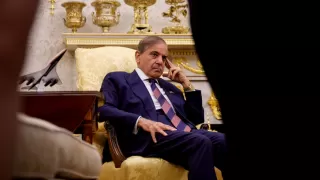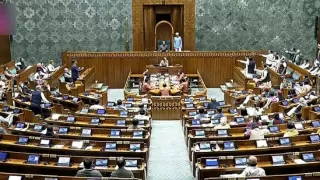The Supreme Court’s 111-page Opinion on the Presidential Reference filed by President Droupadi Murmu on May 13, 2025 delivers a nuanced, carefully calibrated roadmap for the exercise of Articles 200 and 201. The Bench — led by Chief Justice B.R. Gavai and comprising Justices Surya Kant, Vikram Nath, P.S. Narasimha and A.S. Chandurkar — framed its conclusions as the “Opinion of the Court,” avoiding individual authorship and signaling collective gravity. Taken together, the answers to the 14 questions reshape key principles about the Governor’s discretion, the President’s role, and the limits of judicial interference in pre-enactment decisionmaking.
This article unpacks the Bench’s core findings, explains their practical implications for federal relations and legislative process in India, and highlights the narrow but important instances where judicial intervention remains available. Updated as of November 20, 2025, this analysis clarifies how constitutional silence, statutory gap-filling, and institutional comity interact in controversies arising from reserved or withheld assent to state Bills.
Context and Purpose of the Presidential Reference
The Reference under Article 143 was prompted by a prior two-judge judgment in the Tamil Nadu Governor case (April 8, 2025) that had sought to plug perceived constitutional silence by prescribing timelines for gubernatorial action. President Murmu’s Reference sought authoritative guidance on whether the apex Court or any other body could fix such time limits and on the broader contours of the Governor’s and President’s powers under Articles 200 and 201.
The five-judge Bench was careful to distinguish the roles of advising the President under Article 143 from judicial adjudication. It reiterated that Article 143 is a consultative mechanism: the Court’s advisory opinion is not an exercise in pre-emptive law-making but a constitutional clarion that clarifies legal boundaries without crossing into substituting its own policy judgments for those of political actors.
Three Constitutional Options Under Article 200
Article 200 offers three discrete options to a Governor faced with a passed Bill: assent, reservation for the President’s consideration, or withholding assent while returning the Bill with comments (except in the case of Money Bills). The Court emphasized that these options are exhaustive and that any attempt to read a “fourth option” into the provision — for instance, indefinite inaction framed as a separate constitutional power — is impermissible.
Crucially, the Bench held that the Governor enjoys a degree of discretion in selecting among the three alternatives. That discretion, the Court explained, proceeds from the constitutional design where the Governor is not a mere cipher of the Council of Ministers when it comes to exercising the particular statutory functions under Article 200.
Justiciability: Where Courts May and May Not Intervene
One of the Opinion’s central themes is the limited nature of judicial review over the exercise of Articles 200 and 201. The Court held that the merits of the decision taken by the Governor or President are not justiciable — courts must not undertake a merits review of whether assent or reservation was correct. The preservation of executive space is a feature, not a bug, of constitutional governance.
However, the Court carved out a narrow exception. Where there is “prolonged, unexplained and indefinite” inaction amounting to constitutional dereliction — a deliberate bid to frustrate the legislature’s will — the Court may issue a limited mandamus compelling the constitutional office to perform its duty within a reasonable period. This remedy is procedural and does not entangle the judiciary in evaluating the merits of the underlying Bill.
Article 361 and the Immunity of the Governor
Article 361 provides personal immunity to the President and Governors, insulating them from personal judicial proceedings. The Bench underscored the absolute nature of this bar while simultaneously clarifying its boundaries: immunity does not render the constitutional office beyond judicial oversight when the office’s conduct undermines constitutional processes through inaction.
Therefore, while personal suits against a Governor remain barred, the Court affirmed its jurisdiction to supervise the constitutional office where institutional inertia or evasion is demonstrably impeding legislative function — so long as the remedy remains within narrow procedural confines.
Why the Court Refused to Prescribe Timelines
Despite the practical appeal of bright-line deadlines, the Bench concluded it would be inappropriate for the judiciary to fix statutory timelines for Governors or the President. The Court reasoned that such prescription risks judicial overreach into executive and constitutional domains and that the Constitution intentionally leaves certain procedural dynamics to political actors and conventions.
Instead of timelines, the Opinion favours a principles-based approach: uphold accountability, guard against capricious delay, and preserve institutional autonomy. This balance attempts to deter “prolonged and evasive constitutional inaction” without converting the judiciary into a clock-keeper for political offices.
Article 201 and the President’s Role
Mirroring its treatment of Governors, the Court held that the President’s assent under Article 201 is similarly non-justiciable in terms of merits and timing. The President’s “subjective satisfaction” remains central, and the Article 143 consultative path is available when the President seeks legal clarity. The Bench noted that not every reserved Bill requires judicial advice; the President may, in appropriate cases, form his or her own satisfaction without reference to the Court.
Where the President does refer a question, the Court’s advisory opinion resolves legal uncertainty but does not transform the consultative process into a pre-emptive legislative veto or an instrument of adjudication before a Bill becomes law.
Limits of Article 142 and the Concept of “Deemed Assent”
The Court addressed whether Article 142 could be used to substitute constitutional orders — for instance, by deeming a Bill to have been assented to after a period. The Opinion firmly rejected this concept. Article 142 cannot be invoked to bypass the Constitution’s affirmative mechanisms for legislation, and “deemed assent” would undermine the separation of powers and the textual structure of Articles 200 and 201.
By refusing to create a judicial shortcut, the Court reinforced that constitutional remedies must respect the form and function of the document they seek to uphold.
Questions Left Unanswered and Their Significance
The Bench returned Questions 12 and 14 as irrelevant to the functional nature of the Reference and declined to answer Question 13 insofar as it sought an overly broad pronouncement about Article 142. These declinations demonstrate judicial restraint: the Court chose not to convert a focused Reference into a vehicle for expansive constitutional re-engineering.
In doing so, the Opinion affirms a conservative posture about the Court’s institutional role — resolving concrete legal ambiguities that impeded governance while declining invitations to write sweeping doctrines in areas better left to future, more narrowly framed disputes.
Practical Takeaways for State Governments and Legislatures
For states and legislatures, the Opinion sends three clear messages: legislatures retain primacy in expressing policy through Bills; Governors must avoid tactics of indefinite delay; and if a constitutional office seeks clarity, Article 143 remains an available, appropriate channel. The decision thus recalibrates expectations without prescribing micromanagement.
Administrations and counsel will now need to plan procedures that respect the Governor’s discretion but guard against avoidable stalemate — using legislative follow-ups, political negotiation, and, where appropriate, limited judicial remedies to preserve the legislative process.
Conclusion: A Measured Balance Between Autonomy and Accountability
The Supreme Court’s Opinion in the Presidential Reference strikes a deliberate balance: protecting the autonomy of constitutional offices while protecting the people's will against evasive inaction. By refusing to fix rigid timelines yet preserving a narrow judicial remedy for dereliction, the Bench has issued guidance that is both principled and pragmatic — one likely to shape centre-state relations and the legislative lifecycle for years to come.
As constitutional actors adapt to the Opinion’s parameters, the emphasis will fall on institutional responsibility, political accountability, and careful use of Article 143 as a constitutional safety valve — ensuring that legislative intent is neither trampled by executive delay nor commandeered by judicial fiat.
Also Read: India Unveils Next-Gen E-Passports with High-Tech Security






















